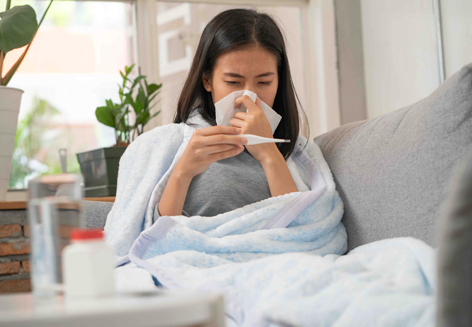A body temperature between 36.3 and 37.5°C is considered normal. Values between 37.5 and 38°C are considered to be elevated temperatures. Temperatures above 38°C are considered a fever, above 39.1°C high fever.
Did you know
- that if you measure the temperature under the tongue or on the forehead, the result is about 0.4°C lower than the actual core body temperature (so really is too low).
- and under the armpit the value could be up to 0.6°C too low.
But the selection of thermometers for home is overwhelming. Each type of temperature measurement has its advantages and disadvantages, and some methods are more suitable for babies and young children than others. Here is an overview.
The most common thermometers are digital contact thermometers. They can be used to measure the temperature rectally where they measure the actual (core) body temperature. When using a digital thermometer in the armpit, it measures the skin temperature. You can also use a digital thermometer to measure the temperature in the mouth. This works with older children and adults and the mouth must be closed the entire time and the thermometer placed under the tongue.
Infrared thermometers are quick, hygienic and easy to use. You differentiate between two types: ear and forehead thermometers and both are non-contact (meaning not touching the point they measure).
Ear thermometers work quickly but require precision. The infrared beam measures the heat given off by the eardrum. If the sensor is not precisely aligned with the eardrum, the measurement is unreliable. Choose an ear thermometer that gives an alert sound if it’s not held correctly. To measure correctly in the ear, you have to straighten the ear canal by pulling the auricle, so the ear, back and up a little. And many children don’t like that. Many paediatricians only recommend ear thermometers for children older than 3 years of age.
Forehead thermometers also use an infrared sensor, are quick and the new ones are very accurate.
Generally, ear thermometers are a little more accurate because they measure the core temperate directly. Forehead thermometers can be a little inaccurate but are very suitable when a baby or child for example is sleeping and a parent just wants to check the temperature without waking the little one up. There are now combined ear and forehead thermometers with which you can measure the temperature of the forehead or in the ear canal as needed.
Pacifier thermometers must be kept firmly in a baby’s mouth. For babies, I recommend rectal measurements, they are safer and more accurate.
I don’t recommend glass thermometers, even if newer ones no longer contain mercury: measurements take much longer and they can break when dropped.
And in a baby or child?
- For babies and toddlers, it’s best to measure the temperature rectally, i.e. in the anus. The error rate is very low and this actually measures the “core” body temperature.
- Lightly apply some cream on the tip of the thermometer and carefully insert it approx. 2 cm deep into the child’s bottom.
- Ear thermometers are only recommended for babies from 6 months the earliest (before that their ear canal is too narrow).
Always measure in the same body part and at the same time of day: body temperature is generally lower in the morning and higher in the late afternoon and evening. If necessary, measure twice a day and more often if the fever is high.
And don’t forget, warm clothing, persistent screaming or romping, and excitement can increase the temperature in a child.
Posted on November 15, 2020 by Luitgard Holzleg
This entry was posted in Blog and tagged body temperature, digital thermometer, ear thermometer, fever in babies, fever in children, fever season, forehead thermometer, infrared thermometer, measuring fever, sickness. Bookmark the permalink.

